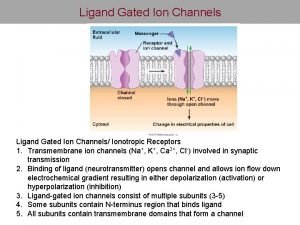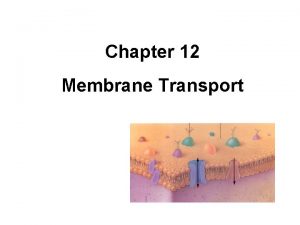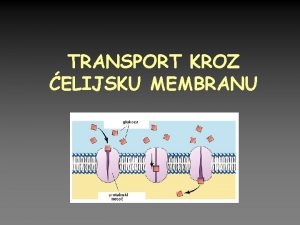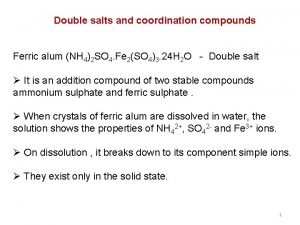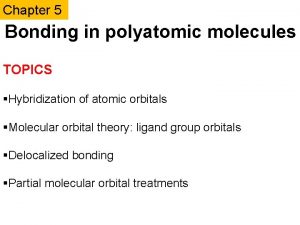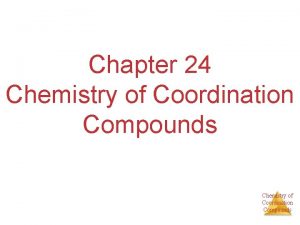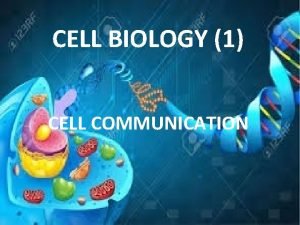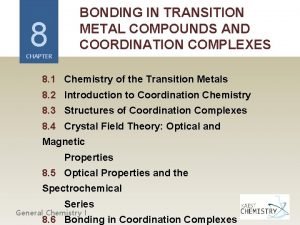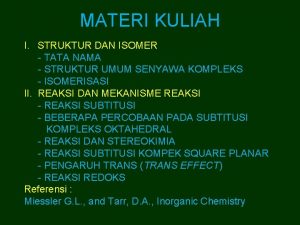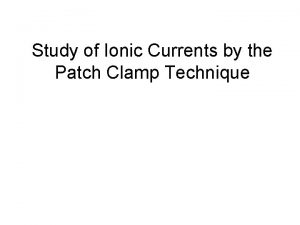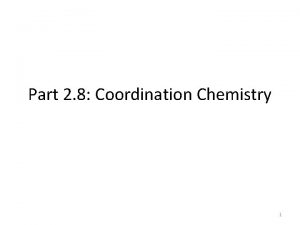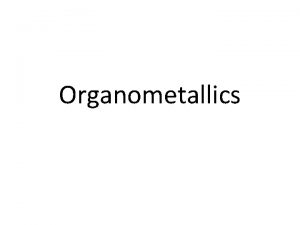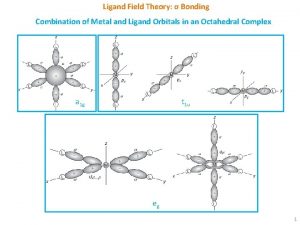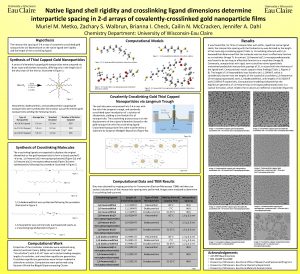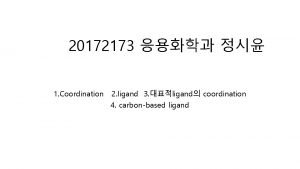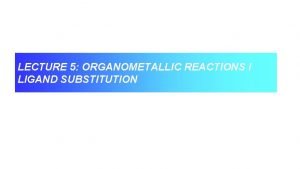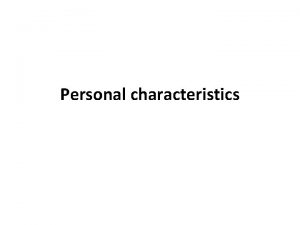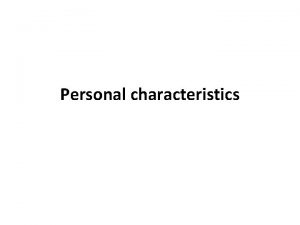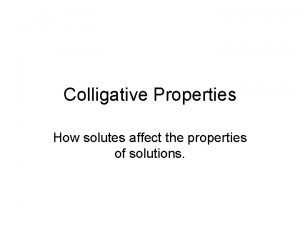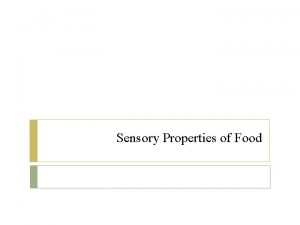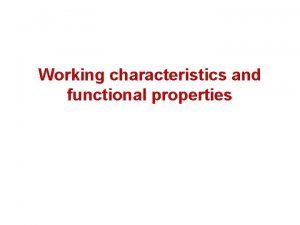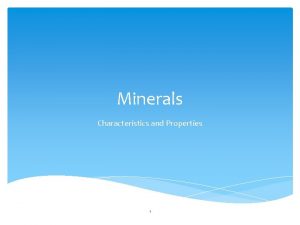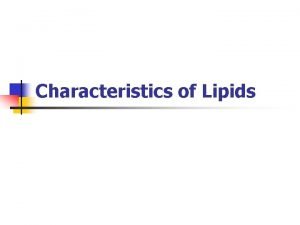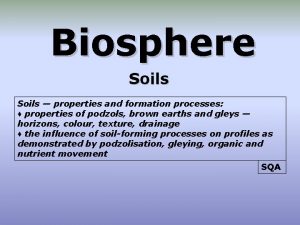How Ligand Properties Affect the Formation and Characteristics























- Slides: 23

How Ligand Properties Affect the Formation and Characteristics of Recoupled Pair Bonds Beth A. Lindquist, David E. Woon, and Thom H. Dunning 06/23/2011

Overview 1. Motivation: understand bonding in hypervalent species Musher’s definition of hypervalency (1969)1: when an atom forms more bonds than the lightest element in that group SF 6 Cl. F 3 PCl 5 2. What is a recoupled pair bond? Example: S-F 3. How do ligand properties affect recoupled pair bonds? 1 Musher, J. I. Angew. Chem. Int. 8, 54 (1969)

Explanations for Hypervalency 1. Pauling’s explanation: d-orbital hybridization Calculations show very little contribution from dorbitals in hypervalent molecules. 2. Pimentel-Rundle three-center model 1, 2: A 3 -center-4 -electron bond that rationalizes hypervalent species. F S F Anti-Bonding Non-Bonding 3. Recoupled pair bonding (RPB) 1 Pimentel, G. C. J. Chem. Phys. 1951, 19, 446; 2 Rundle, R. E. J. Chem. Phys 1949, 17, 671

What is a Recoupled Pair Bond? Example: S-F S F

What is a Recoupled Pair Bond? Example: S-F S F ?

What is a Recoupled Pair Bond? Example: S-F 2 S F ? 4 - S F Bond is longer and weaker.

Covalent vs. RPB Orbitals SF X 2 (Covalent) SF a 4 - (Recoupled) Woon, D. E. and Dunning, T. H. J. Phys. Chem. A 2009, 113 (27), 7915

Covalent vs. RPB Orbitals SF X 2 (Covalent) Singly occupied anti-bonding orbital accounts for weaker bond energy and longer bond length for RPB. SF a 4 - (Recoupled)

Generalized Valence Bond (GVB) Orbitals GVB orbitals are transformations of the natural orbitals. They are singly occupied and atom centered. Sulfur 3 p 2 MO; Occ=2. 0 Includes multi-reference character. It provides insight into the rearrangement of electrons during bonding. GVBL; Occ=1. 0 GVBR; Occ=1. 0

GVB Orbitals for a 4 - SF S All GVB orbitals are singly occupied. Woon, D. E. and Dunning, T. H. J. Phys. Chem. A 2009, 113 (27), 7915 F

Orbital recoupling S F At large r, the 2 sulfur lobe orbitals are spin-coupled together. At re, what was the fluorine p orbital is now spin-coupled to one of the sulfur lobes, with the other lobe leftover in an antibonding orbital (hence the term recoupling).

Connection between RPB and hypervalency S F

Connection between RPB and hypervalency F F S F F RPB anticipates the saw-horse structure of SF 4.

How do ligand properties affect recoupled pair bonds? • What happens if we replace the ligand (F) with a different ligand? F Cl, Br, I F OH, NH 2, CH 3 • What features determine the strength of a RPB? • Can we connect ligand properties to RPB strengths?

Other sulfur halide RPB states a 4 - MRCI+Q/AVQZ Going down in the periodic table results in an increase in bond length and a decrease in bond energy.

Other first row RPB states Quartet states MRCI+Q/AVTZ Only the more electronegative ligands (F, OH) yield a bound recoupled state. Why do some ligands recouple a lone pair but others do not?

The Ionization Potential of S-L Correlates with Bond Energy RCCSD(T)-F 12/AVTZ L B. E. (kcal/mol) F 36. 7 Cl 22. 5 Br 18. 7 I 15. 1 OH 12. 8 SH 8. 6 The stability of the electron in the anti-bonding orbital is positively correlated with the S-L bond energy.

Ligand Electronegativity is an Influential Factor in RPB F Cl OH Br SH I Mulliken electronegativity ( : (IP+EA)/2

Ligand Electronegativity is an Influential Factor in RPB Introduce adjustable parameter: =c*EA+(1 -c)*IP c=0. 5 for Mulliken definition of electronegativity

Prediction: S-OCH 3 Calculate for OCH 3 Predicted bond energy: 1. 5 kcal/mol

Prediction: S-OCH 3 Calculate for OCH 3 Predicted bond energy: 1. 5 kcal/mol Actual bond energy: 4. 1 kcal/mol Works well for ligands with a singly occupied p-orbital.

Conclusions • Recoupled pair bonding can explain hypervalency in the late p-block. • Ligand properties correlate well with recoupled pair bond strengths, providing the potential to quantitatively predict RPB strengths. • Electron affinity seems to play a particularly important role in determining the strength of a RPB.

Acknowledgements The Dunning Group
 Ligand and voltage gated channels
Ligand and voltage gated channels What causes hyperpolarization
What causes hyperpolarization Olaksana difuzija
Olaksana difuzija Double salts and coordination compounds
Double salts and coordination compounds Bidentate
Bidentate Hcn hybridization diagram
Hcn hybridization diagram Werner coordination number
Werner coordination number Ligand signaling molecule
Ligand signaling molecule Spectrochemical series of ligands
Spectrochemical series of ligands Ligan heksadentat adalah
Ligan heksadentat adalah Complexes of the type m(aa)3 ±n show
Complexes of the type m(aa)3 ±n show Patch clamp inside out
Patch clamp inside out Ligand field strength order
Ligand field strength order Ligand electron count table
Ligand electron count table Ligand field theory
Ligand field theory Formation initiale vs formation continue
Formation initiale vs formation continue Intensive vs extensive properties
Intensive vs extensive properties Chemical property definition
Chemical property definition Hình ảnh bộ gõ cơ thể búng tay
Hình ảnh bộ gõ cơ thể búng tay Bổ thể
Bổ thể Tỉ lệ cơ thể trẻ em
Tỉ lệ cơ thể trẻ em Voi kéo gỗ như thế nào
Voi kéo gỗ như thế nào Chụp phim tư thế worms-breton
Chụp phim tư thế worms-breton
